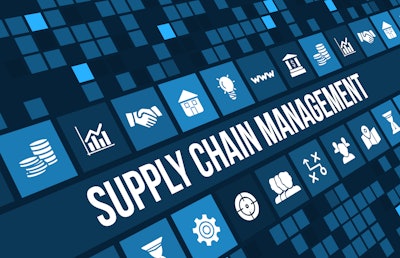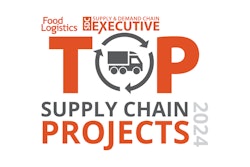
The cold chain represents a crucial component of the global food logistics network. It ensures that perishable food items maintain quality and safety from the point of origin to the consumer. This process relies heavily on a seamless series of storage and distribution activities, all requiring precise temperature control to prevent spoilage and loss. As the demand for fresh food increases globally, the efficiency and reliability of cold chain logistics have never been more important.
Enter advanced networking technologies: a suite of innovative solutions designed to enhance the management and operation of the cold chain. By leveraging these technologies, stakeholders in the food logistics sector can significantly improve cold chain logistics' effectiveness, ensuring that perishable goods are transported safely and efficiently.
Critical role of the cold chain in food logistics
The cold chain is a temperature-controlled supply chain essential for extending and ensuring the shelf life of perishable goods such as fruits, vegetables, meat, and dairy products. By maintaining specific temperature ranges during transport and storage, the cold chain helps preserve the quality, safety, and nutritional value of these foods, reducing waste and ensuring they reach consumers in the best possible condition.
However, managing the cold chain presents unique challenges, including precise temperature control across different climates and geographies, the risk of equipment failure, and the complexity of real-time temperature monitoring to prevent spoilage.
The stakes are high, as any break in the cold chain can lead to significant food loss, reduced food safety, and economic losses for producers, retailers, and logistics providers. Consequently, the cold chain has become an area of focus for innovation, with advanced networking technologies playing a pivotal role in addressing these challenges.
By integrating smart sensors, Internet of Things (IoT) devices, and data analytics, stakeholders can achieve greater visibility and control over the cold chain. It ensures that perishable goods are kept at optimal conditions throughout their journey.
Networking technologies powering cold chain innovations
The modernization of cold chain logistics heavily relies on adopting advanced networking technologies. Among these, IoT sensors, real-time data analytics, and blockchain technology are key drivers of efficiency and reliability improvements. These technologies offer robust solutions to some of the most pressing challenges in cold chain management, including maintaining consistent temperatures and enabling real-time monitoring of perishable goods throughout the supply chain.
IoT sensors. IoT sensors can be placed within transportation units and storage facilities to monitor temperature and humidity levels continuously. This constant surveillance ensures that perishable goods are stored and transported safely, significantly reducing the risk of spoilage. For instance, IoT-enabled trucks can alert operators the moment temperatures deviate from the preset range, allowing for immediate corrective actions.
Real-time data analytics. The data collected by IoT sensors can be analyzed in real-time to predict potential issues before they arise. Data analytics can identify patterns that may indicate a refrigeration unit's impending failure or other risks to the cold chain. By leveraging predictive analytics, logistics operators can proactively address problems, minimize disruptions, and ensure the integrity of perishable goods.
Blockchain technology. Blockchain can enhance the transparency and security of the cold chain by providing a tamper-proof record of the entire transportation and storage history of perishable goods. Each step in the cold chain, from the farm to the supermarket shelf, can be recorded and verified, offering unparalleled traceability. This level of transparency builds trust among consumers and simplifies the process of identifying and addressing points of failure within the cold chain.
The implementation of these advanced networking technologies has already shown promising results in enhancing the cold chain's efficiency and reliability.
Benefits of advanced networking in the cold chain
Improved temperature control. Advanced networking technologies, particularly IoT sensors, are pivotal in maintaining precise temperature control throughout the cold chain. These sensors provide continuous monitoring of temperature conditions in real-time, allowing for immediate adjustments to be made whenever deviations from the optimal range are detected. This level of control ensures that perishable goods are kept in ideal conditions from the point of origin to the destination, significantly reducing the risk of spoilage due to temperature fluctuations.
Maintaining consistent temperatures preserves the quality and safety of the food and complies with regulatory standards, ensuring that perishable items reach consumers in the best possible condition.
Enhanced visibility and traceability. The integration of IoT and blockchain technologies into the cold chain logistics framework drastically improves product traceability and visibility for all stakeholders involved. IoT devices track and monitor the condition of goods in real-time, while blockchain technology offers a secure and immutable ledger of all transactions and movements within the supply chain. This combination gives stakeholders a transparent view of the product journey, from production to delivery.
Enhanced traceability and visibility facilitate quicker response times to any issues that may arise, ensuring accountability and simplifying the recall process if necessary. Moreover, this transparency builds trust among consumers, who are increasingly concerned about the origins and handling of their food.
Data-driven decision making. Real-time data analytics in cold chain logistics empowers businesses to make data-driven decisions. By analyzing the vast amounts of data generated by IoT sensors, companies can identify trends, predict potential disruptions, and optimize logistics routes and storage conditions. This proactive approach to decision-making helps minimize waste, reduce costs, and improve overall operational efficiency.
Data-driven insights enable logistics managers to fine-tune the cold chain process, anticipate demand more accurately, and allocate resources more effectively, ensuring that perishable goods are delivered in a timely and cost-efficient manner.
Implementing advanced networking solutions
Integrating advanced networking technologies into existing cold chain operations requires careful planning and consideration of several key factors. The steps toward integration typically involve:
- Assessing current systems. Evaluate the current cold chain management systems and identify areas that could benefit from enhanced monitoring, control, or data analysis.
- Scalability. Choose technologies that can grow with your business. Scalability is crucial as the volume of perishable goods and the complexity of supply chains increase.
- Cost consideration. While initial costs can be high, focus on the long-term savings and ROI from reduced spoilage, improved efficiency, and enhanced compliance with food safety standards.
- Interoperability. To avoid disruptions, ensure that new networking technologies seamlessly integrate with existing systems. It might involve selecting compatible platforms with a wide range of devices and software systems.
- Vendor selection. Partner with technology providers with proven expertise in the food logistics sector and can offer tailored solutions that meet the specific needs of the cold chain.
The adoption of advanced networking technologies has its challenges. Technical limitations, such as the need for comprehensive network infrastructure in remote areas or the compatibility of different systems, can pose significant hurdles. Additionally, implementing these technologies often requires staff training to ensure all team members are proficient in using new tools and understanding the data they generate.
Wrapping up
The integration of advanced networking technologies offers a significant opportunity to enhance the efficiency and reliability of the cold chain. These technologies can transform cold chain logistics by enabling precise temperature control, improving visibility and traceability, and facilitating data-driven decision-making, leading to optimized operations and reduced waste.
As the food logistics industry faces increasing demand and regulatory requirements, the strategic integration of IoT sensors, real-time analytics, and blockchain into cold chain operations represents a forward-thinking approach to staying competitive.
Food logistics professionals must comprehensively assess their current cold chain management systems and identify areas where advanced networking technologies could significantly impact them. By embracing these innovations, businesses can improve their operational efficiency and enhance the quality and safety of the perishable goods they transport, ultimately contributing to a more sustainable and resilient food supply chain.




















